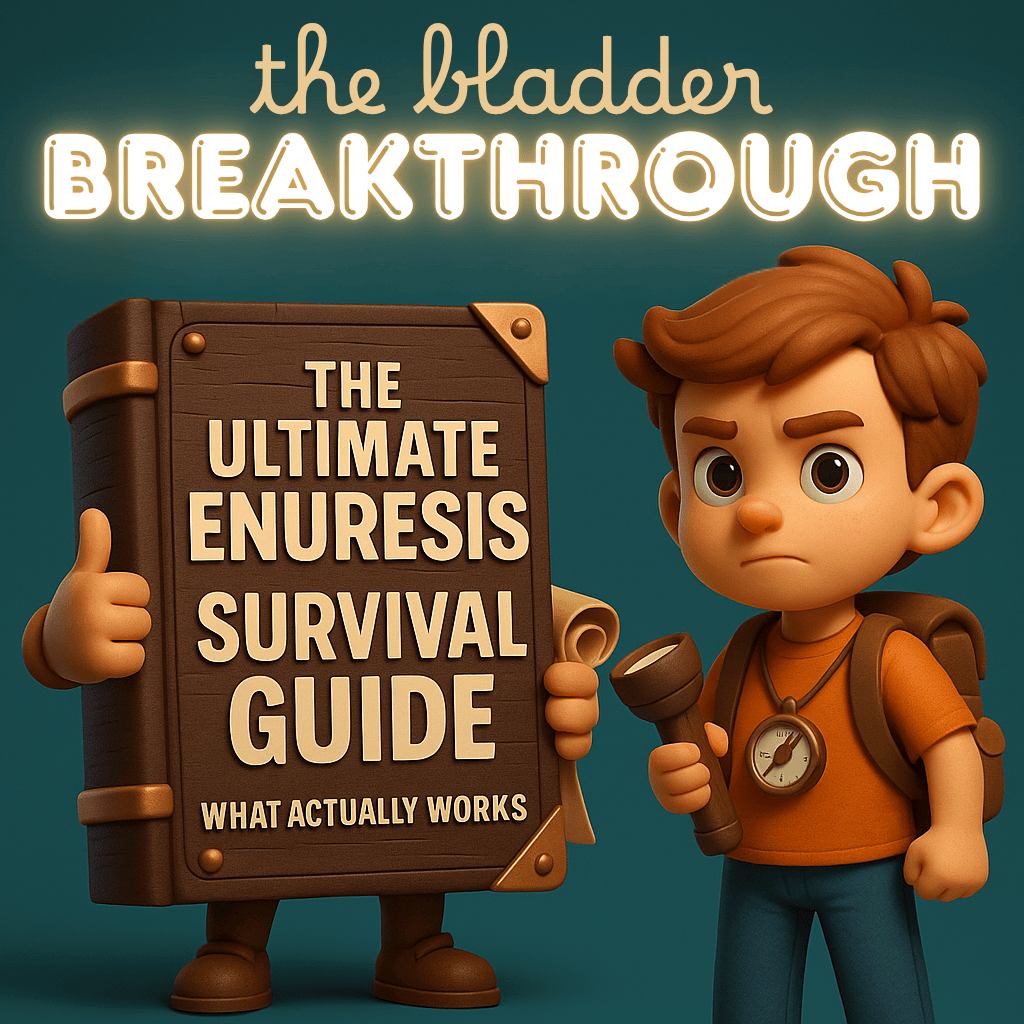by Dr. Tiffani S. Bacon, PT
Founder of The Bladder Breakthrough™ | Pediatric Pelvic Health Specialist
An honest survival guide for parents ready to stop guessing and start seeing real progress.
If you’re a parent navigating the ups, downs, and laundry piles of childhood bedwetting — you’re not alone. Roughly 15% of 7-year-olds experience nighttime enuresis, and for some, symptoms persist well into adolescence (Ferrara et al., 2024). Yet, despite the numbers, the support? Scattered. The advice? Conflicting. The stress? Sky-high.
Let’s cut through the noise. This guide breaks down what’s backed by science, what’s not worth your energy, and how to build a realistic game plan that supports both your child’s health and your family’s sanity.
✅ What Actually Works
1. Bedwetting Alarms: The Gold Standard
Bedwetting alarms train the brain–bladder connection by waking the child at the first sign of moisture. With consistent use over several months, they boast success rates of 70–80% — higher than meds alone. And the kicker? Relapse rates are lower, too.
💡 Pro Tip: Alarms work best when kids are motivated and parents are actively involved in wake-ups and tracking progress.
2. Desmopressin: Short-Term Wins
This medication reduces overnight urine production, making it helpful for sleepovers or trips. While relapse is common when stopped cold, pairing it with alarm therapy can boost short-term success and long-term confidence.
3. Cognitive Behavioral Therapy (CBT)
CBT helps address the emotional side of enuresis: anxiety, shame, and habits that hinder progress. Whether in person or via online tools, CBT combined with education and lifestyle changes is far more effective than education alone.
4. Treating the Whole Child: Coexisting Conditions
Many kids with enuresis are also managing:
-
Constipation
-
ADHD or neurodivergence
-
Sleep disorders
-
Stress or trauma
Treating these alongside enuresis improves outcomes and avoids wasted effort. No single solution works in isolation — the real progress happens when everything’s addressed together.
5. Family Support & Positive Reinforcement
Let’s be clear: Your mindset matters. Studies show that parental attitude, patience, and consistency directly influence treatment outcomes. When kids are supported instead of shamed, results skyrocket.
Use:
-
✅ Reward systems like sticker charts
-
✅ Praise for effort, not perfection
-
✅ United caregiver responses (no mixed messages!)
❌ What Doesn’t Work
Waiting It Out
Yes, some kids grow out of it. But for many, the “wait and see” approach leads to sleep problems, self-esteem issues, and long-term stress. Early intervention = fewer years of struggle.
Punishment or Shame
Nocturnal enuresis is never a child’s fault. Period.
Discipline-based tactics not only fail — they cause harm. Research confirms that punishment increases anxiety, delays progress, and worsens outcomes (von Gontard & Kuwertz-Bröking, 2023).
Unproven Remedies
Supplements, herbal drops, and internet “cures”? Most have zero clinical backing. If it sounds too good to be true — it probably is. Always consult a provider before investing time or money.
⚠️ Still in the Research Phase...
-
Laser acupuncture
-
Hypnotherapy
Interesting? Yes. Proven at scale? Not yet. Watch this space.
💸 The Hidden Costs of Doing Nothing
The impact of untreated bedwetting adds up fast:
-
Pull-ups: $500–$700/year
-
Extra laundry/cleaning: $200+
-
Behavioral consults: $125–$300/session
-
Sleep disruption and emotional toll: priceless
Early, targeted care isn’t just better for your child — it’s better for your budget, too.
🧠 The Integrated Approach: Layering for Long-Term Success
The real magic happens when treatments are layered:
-
Alarms retrain the body
-
Medication supports key moments
-
Behavioral strategies build healthy routines
-
Family support keeps morale high
-
Coexisting issues get addressed in tandem
This is what we mean by comprehensive, coordinated care. Not guesswork. Not guilt. Just evidence-based empowerment.
Final Thoughts: You’re Not Alone — And It Is Treatable
Bedwetting isn’t about laziness or bad parenting. It’s a multifactorial condition that deserves thoughtful, compassionate, and customized care. With the right tools and support, your child can go from anxious to confident — and your home from chaos to calm.
So let’s break the silence.
Let’s drop the shame.
Let’s make enuresis care understood, empowered, and effective.
You’ve got this — and The Bladder Breakthrough™ is here to help.
💥 Want more evidence-based guidance?
Explore our structured, pediatrician-approved home programs and digital tools at www.bladderbreakthrough.com, or check out the full article here.
📌 Save this post, share it with a friend, or reach out for tailored support. Because no family should feel alone on this journey.
